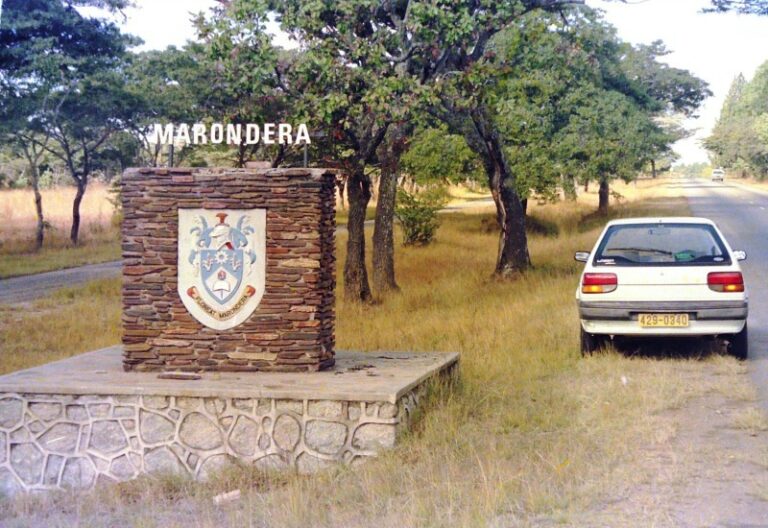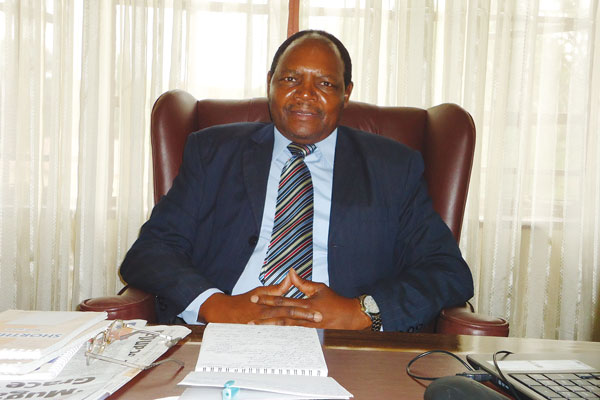
BY BRENNA MATENDERE
Two serving ambassadors, a retired diplomat and a high-ranking army officer are among numerous individuals who have been controversially settled on a private Midlands conservancy.
The conservancy is located in an area which President Emmerson Mnangagwa and his wife, respectively, once represented in parliament.
Lands, Agriculture, Water, Climate and Rural Resettlement ministry officials are being blamed for the contested occupation of the conservancy.
Named diplomats admitted in interviews to getting pieces of land on the 63 000 hectare conservancy which is home to a range of wild animals that include the black rhino, elephants, kudus, eland, impala, bushbuck and waterbucks.
Buffaloes, hippopotamuses, zebras, wild dogs, leopards, cheetahs, brown and spotted hyenas and lions are also among the residents of the conservancy, which is managed as 10 separate game ranges.
Other people who have been settled on the Midlands Black Rhino Conservancy (MBRC) —situated in the Chirumanzu-Zibagwe constituency—include senior bureaucrats and members of the ruling Zanu PF party, it was established.
The MBRC has one of the highest populations of sables in Zimbabwe and conducts leopard ecological surveys, according to its website.
- Chamisa under fire over US$120K donation
- Mavhunga puts DeMbare into Chibuku quarterfinals
- Pension funds bet on Cabora Bassa oilfields
- Councils defy govt fire tender directive
Keep Reading
The mainly rural constituency was hastily set up ahead of the 2008 elections and won by President Mnangagwa, who had been beaten back-to-back in urban Kwekwe in 2000 and 2005 by the Movement for Democratic Change’s Blessing Chebundo.
Mnangagwa gave up the constituency when he was appointed co-vice president in 2014.
His wife and now first lady, Auxillia, contested and won the seat as a Zanu PF candidate in a 2015 by-election and was replaced by the ruling party’s Prosper Machando when Mnangagwa became president in 2017.
Members of the ruling party from surrounding areas like Zhombe, Chiundura, Kwekwe and Lower Gweru invaded the conservancy’s Dunlop Range ahead of the by-election with the blessings of relevant government departments like the Lands ministry.
These invasions set the pace for the current occupations.
Investigations done in collaboration with Information for Development Trust (IDT), a non-profit organisation supporting Zimbabwean and Southern African journalists to report on corruption and bad governance, have established the occupation of the MBRC—which runs as a trust, manages game drives and is home to more 200 bird species—by politically exposed individuals is threatening the area’s ecosystem.
In the dark
The Environment ministry says it is not aware of the new settlements on MBRC. It urged the aggrieved parties to report the matter.
The responsible minister, Mangaliso Ndlovu, said in an interview that it was not government policy to resettle people on private properties.
“That case has not come to my desk so I am not able to issue a detailed comment. The rhino conservancy, I think, is a private property but they have not come to us. It is up to the owner to come to us if they think they want us to get involved,” he said.
The MBRC was set up in 1987 when farmers owning 14 pieces of land came together to pursue wildlife business on a total of 63,113 hectares as shown on the conservancy’s website.
For effective management, the conservancy is geographically set up on 10 wildlife ranges, namely Moreena, Mazuri, Mahamara, Chinyika, Circle G, Dunlop, Twin Springs, Bemthree, Estrange and Sebakwe Recreational park that was “donated” to the Zimbabwe Parks and Wildlife Management Authority (Zimparks) by resettled farmers.
The respective ranges are managed by individuals and consortia.
As indicated on the MBRC website, there was an initial 66 black rhinos on site.
Previously known as the Greater Munyati Conservancy, the MBRC now hosts only eight black rhinos, with an unknown quantity being confined to areas outside the combined ranges.
The MBRC owners resolved through a constitution some time back that they would not pursue agricultural activities and would pull down internal fencing while putting a halt to further construction of buildings.
But the proliferation of new settlers is reversing that, with the new occupations coming with new buildings, fencing off of areas and numerous farming activities that disrupt wildlife management.
On-site observations made during the investigation revealed that the new occupants have set up temporary cabins inside the conservancy and brought in domestic livestock that is taking up pastures reserved for wildlife.
The new occupations are also heightening human-wildlife conflict as poaching by the “new farmers” is on the rise as the new occupants risk harm and loss of life.
Farm workers employed by the new settlers are using animal traps to snare small game like hares, kudus, impala, eland, impala, bush buck and the waterbucks.
It was also observed that the settlers were clearing big tracts of land for farming purposes, a development that disturbed the natural habitats and vegetation and drove away the wild animals from their homes.
Diplomatic occupations
One of the new settlers is Zimbabwe’s ambassador to South Africa, David Douglas Hamadziripi.
He replaced Isaac Moyo who was appointed the director general of the Central Intelligence Organisation (CIO) in December 2017 following a military-assisted takeover that removed Mugabe, who had ruled since independence in 1980, and put Mnangagwa in his stead.
Mnangagwa was confirmed president in the July 2018 elections, but his victory was unsuccessfully clanged by Nelson Chamisa of the MDC Alliance who claimed the poll had been rigged.
Hamadziripi served as Zimbabwe’s ambassador to France during the Mugabe tenure and is a former senior employee of the United Nations.
He confirmed getting a piece of land in the conservancy.
“I have a piece of land there, but I am not so sure that I am obliged to tell you what I am going to be doing with it because you are not the one who gave it to me in the first place,” said the ambassador.
He insisted that his occupation of part of the conservancy would not disturb the wildlife.
“I certainly do not intend to erect any fences on the piece of land. So any wildlife in the area will be able to move around,” he said.
Hamadziripi accused people opposed to his occupation of the land of being enemies of Zimbabwe’s land redistribution programme, which, however, was officially declared over more than a decade ago.
“Whoever is saying those settlements could be irregular is opposed to the land reform programme in Zimbabwe. We did not just wake up from nowhere and pitched up on that piece of land. We got the necessary authorisation from the competent and relevant authorities,” he said.
Zimbabwe’s former permanent representative to the United Nations, Chitsaka Chipaziwa, also got a piece of land in the conservancy, and had no qualms confirming it.
The 68-year old diplomat served as ambassador to Malaysia, Indonesia, Thailand, Brunei and Cambodia between 1996 and 2003, according to online sources. He is also a former deputy head of mission in South Africa.
“The national parks will be supervising our activities so that we do not disturb wildlife. All my activities have been registered with the ministries of Environment and Agriculture,” he said.
Chipaziwa said the Lands ministry had authorised his settlement on the conservancy.
“If you think the settlements were irregular, you address that question to the relevant authorities. As far as I am concerned I followed the procedures. I am confident that whatever I am going to do will be supervised by (the department of) National Parks to ensure we co-exist with the wildlife,” he said.
The Parks and Wild Life Act (Chapter 20:14) prohibits human settlements or agricultural activities on conservancies without an accompanying law.
There is no publicly available information showing that the settlement of the new farmers in the park was enabled by a statutory instrument or any other relevant legislation or decree.
Zimbabwe’s current ambassador to the UN, Albert Ranganai Chimbindi, is also a beneficiary of the settlements on the MBRC conservancy.
Before assuming the UN position, Chimbindi was Zimbabwe’s ambassador to Ethiopia between 2014 and 2020. Previously, he had served as the permanent representative of Zimbabwe to the African Union and the United Nations Economic Commission for Africa.
In an interview from his base in New York, Chimbindi indicated that he intended to produce both crops and livestock.
“I want to do both livestock and horticulture on that piece of land. There are some discussions going on between us and the ministry of Environment to help us on how to operate. There are also people from National Parks who gave us conditions on how we must operate,” he said.
Chimbindi hung up when asked if he did not think settling on the conservancy would disturb the wildlife.
A wildlife expert who requested anonymity said MBRC had an automatic special status as an Intensive Protection (IP) zone by virtue of holding protected species like the rhino.
“Whether the people who are settled in the conservancy were given authority by the lands department or not, the position is that any area with an IP status must not be occupied and must be kept intact for the wildlife.
“Even if the rhinos may not be seen in some areas in the conservancy, it does not mean the land is lying idle. Each rhino needs spacious home range. Some people could be saying the conservancy is too big but, for breeding purposes, each rhino needs about 50 square kilometres,” the expert said.
Air Commodore Marcelino Jaya, who is based at the Josiah Magama Tongogara Airbase in Gweru, is also on the list of the conservancy settlers. The general did not respond to calls and he blocked the investigating reporter following several Whatsapp messages that blue-ticked.
Available documents show that he is the one who urged fellow settlers to block the investigating reporter.
Another senior soldier who got a plot in the conservancy, Captain Benson Munyanduki, first asked to “talk in person” but later ignored requests for information relating to his occupation of an area on MBRC.
When contacted for comment, he asked to “talk in person”.
He did not return further requests to give additional information.
Other notable settlers include Charles Sungwa, a chartered quantity surveyor running a consultancy in South Africa, Clive Mphambela, the Finance ministry’s chief director, and Collen Masunda, a local businessman.
Mphambela insisted that he observed due process when he was allocated a plot in the conservancy and argued that his activities would not negatively impact the wildlife.
“We are working closely with the ministries of Environment and Agriculture. Technical staff have been deployed to optimise land use. The area was already a mixed-use farm,” he said.
Masunda, Jaya and Sungwa did not return requests for comment despite reading the Whatsapp messages.
Blocked
Records show that members of a Whatsapp group comprising the settlers resolved to block the investigating reporter, with one of them wondering how the journalist got information relating to the occupation of MBRC.
Garry Killea, the MBRC chair, was non-committal when contacted for his comment.
“As a trust, all MBRC actions are governed by the MBRC constitution,” he said.
Killea referred further questions to Doug King, the head of the Chinyika range, one of the targets for resettlement.
King described the resettlement of the people in the range as “detrimental” and said they had not been officially notified of the switch of jurisdiction from the Environment ministry to Lands.
“We are at the core of the conservancy and hold the bulk of the wildlife. Dividing up the conservancy will be detrimental to the wilderness, wildlife and eventually the community.
“Breaking up these size areas into small holdings is not conducive for game ranching and it will leave very little natural habitat for the wildlife,” said Doug, who is also worried that the new settlements will shrink grazing land for the wild animals.
Doug said he was preparing a court challenge and did not intend to pre-empt the case. He, however, cast aspersion on the applications for settlement in the conservancy.
“Some of the letters that are being brought by people coming to occupy our land are dodgy. No stamp, no signature,” he lamented.
Several women who have been helping manage the conservancy fear that the occupations will disrupt their livelihoods.
“I have been working here for the past 11 years and my family’s income is here. Our livelihoods are now at stake because of what is happening. We risk being relieved of our duties because the area we were covering now has new settlers,” said Memory Nkiwane.
Miriam Mberikwazvo, another conservancy employee, is heartbroken.
“The chaos that is happening has a bearing on my career because it means I will not have the space to do my work. Together with other women, we had developed a passion for wildlife and seeing the animals’ habitat being desecrated like this brings pain to our hearts,” she said.
Before the current crisis, a female professional hunter and guide, Shylet Gutu, says of MBRC in a testimony: “The conservancy has a captivating ecological phenomenon, which is of great interest to environmentalists.”
Investigations revealed that the owners of the conservancy tried to seek help from the Zimparks Ngezi zone manager, Trumber Jura, who is in charge of the area that covers MBRC.
Jura reportedly told the authorities that he could not help them in any way because “things are already in motion”.
But Jura refused to speak out.
“You can talk to Mr (Tinashe) Farawo, the Zimparks public relations manager. I represent Zimparks whose PR (public relations) manager I have referred you to,” he said.
Farawo, however, said Zimparks was not responsible for the crisis taking place inside MBRC.
He said his department had not recommended people to be resettled in the conservancy.
“We don’t distribute land. Our business is wildlife management and conservation. We don’t issue offer letters,” Farawo said.
Kwekwe district acting lands officer, Simbarashe Chijuwa, who has been seen inside the conservancy pegging pieces of land for the new settlers, said he was not permitted to speak to the media.
“You will need to speak to the provincial lands officer. She is the one mandated to speak on that issue. We are not allowed to speak to the media,” he said.
But the Midlands provincial lands officer, Kudzai Katiyo, said: “We need to seek clearance from the director of lands before we give out information. That is the procedure,” she said.
In follow up enquiries days later, she said she had “failed to get clearance from my superiors”, so she could not comment on the matter.
Cephas Magaudze, the director of lands at the Lands ministry refused to shed light on the settlement of people in the conservancy while the responsible minister, Anxious Masuka, repeatedly ignored calls made to him,
Tafadzwa Mugwadi, the Zanu PF director of information and publicity denied that the party had resettled people in the MBRC ahead of the 2015 by-election.










